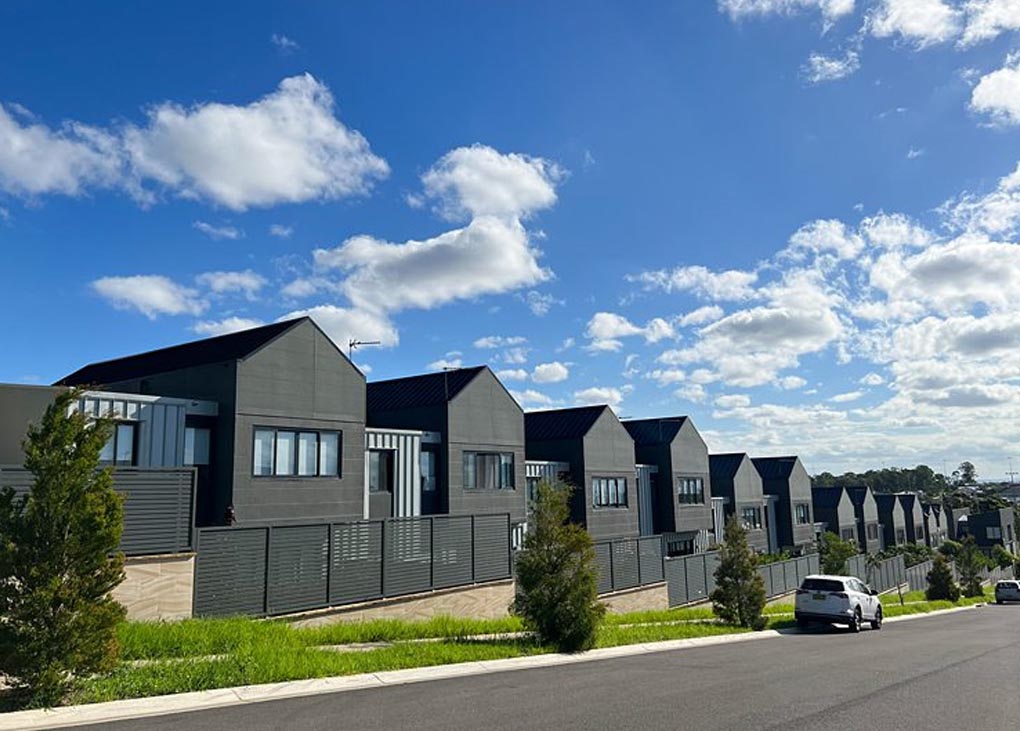The use of outdated climate files in NatHERS could mean that today’s “energy efficient” homes are not fit for tomorrow’s climate, according to a new report produced by Sweltering Cities and Renew.
The National Construction Code (NCC) requires that Australian homes meet energy efficiency standards under the Nationwide House Energy Rating Scheme (NatHERS). NatHERS ratings measure how much energy is needed to heat and cool homes in a range of climate zones, setting limits for heating and cooling loads to achieve star ratings.
The team behind the report notes that the climate zones are designed using existing weather data. Until 2022, these were based on weather data from 1970–2005; now the data is from 1990–2015. As global temperatures rise, homes will require more energy to keep cool, meaning that they will not be as energy efficient as their ratings suggest.
The new research from Renew and Sweltering Cities uses CSIRO projected climate data to model indoor temperatures and energy use in homes from 2030 to 2090. Localised case studies of new and old homes were analysed in Brisbane, Cairns, Melbourne, and Adelaide.

Residents in the climate firing line
“Our energy efficiency ratings system uses out-of-date climate data that underestimates how hot it’s going to get in our homes in the future, and how much energy is required to cool them,” says Emma Bacon, Founder and Executive Director of Sweltering Cities. “It’s just not common sense to build a home for a climate that no longer exists.
“We can already measure the difference between the historical climate in the data we use in the National Construction Code and the climate we’re experiencing today. Homes that meet the current standard will have higher indoor temperatures and require more energy than predicted to keep them cool. The biggest difference will be seen in hot climates and older homes.
“You might think you’re set for the future if you’re building a 7-star home, but that rating will go down over time as the actual climate moves further away from the current standard.”
Bacon says the climate data in NatHERS must be updated to ensure people building today have suitable homes in the future.
“Living in a hot home is dangerous for people who are at risk of heat-related disease,” she says. “As our climate gets hotter and energy efficiency gets lower, even more people will be at risk at home, especially people who might struggle to afford cooling in the first place.”
Undermining our climate goals
Rob McLeod, Policy and Advocacy Manager at Renew, says there are important implications for the wider energy system too.
“A hotter climate will drive more energy use and put energy grids under increasing pressure at peak times,” says McLeod. “As we shift to renewable energy, we need to be able to make reliable predictions about the amount of power we’ll need.
“Our research finds that the amount of energy needed to cool a home in Brisbane is set to double by 2050. A 7-star home built in Queensland today will score zero stars by 2090 under a severe climate change scenario.
“We found that without better energy efficiency, temperatures inside homes during summer could rise by 2–4°C this century. There’s a critical need to weatherproof homes as part of broader action to limit climate change.
“This is an issue of climate change mitigation and adaptation. Designing our homes well can reduce emissions and help to keep us safe from extreme temperatures at the same time. Using future climate data to calculate NatHERS ratings is important for making our homes resilient.”
The report is available at the Renew website.
Image courtesy of Sweltering Cities and Renew.
 Mark Vender
Mark Vender


Leave a Reply